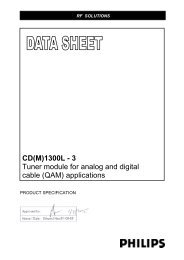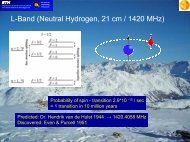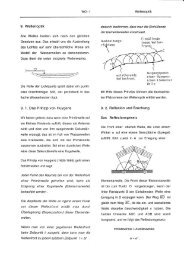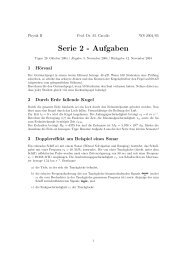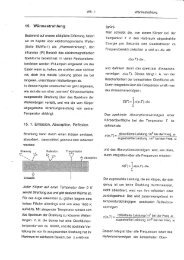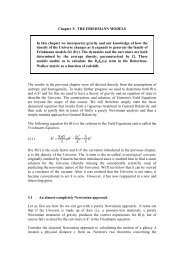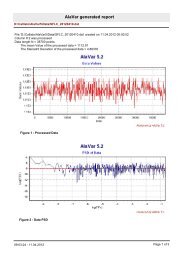here - Institute for Astronomy Umleitung
here - Institute for Astronomy Umleitung
here - Institute for Astronomy Umleitung
You also want an ePaper? Increase the reach of your titles
YUMPU automatically turns print PDFs into web optimized ePapers that Google loves.
Understanding the physical properties of the<br />
gas reservoir from which the stars are <strong>for</strong>med<br />
is key to understanding the physics of<br />
<strong>for</strong>mation of stars. Ionization and shock fronts<br />
through the interstellar medium may cause the<br />
star <strong>for</strong>mation to propagate spatially (e.g.,<br />
Puxel et al. 1997), on timescales which are<br />
likely to depend on both the local physical<br />
conditions as well as the global properties of<br />
the host galaxies. Extinction-corrected line<br />
emission fluxes of hydrogen and metal<br />
<strong>for</strong>bidden lines are needed to construct<br />
diagnostic diagrams such as the<br />
log([OIII]/Hβ) line ratio against the<br />
log([NII]/Hα), log([SII]/Hα), or log([OI]/Hα)<br />
ratios; these diagnostics distinguish photofrom<br />
shock-ionized gas. The presence of<br />
non—photoionized gas has been detected in<br />
long-slit spectroscopic and kinematic studies<br />
(Martin 1998). However, because of the<br />
limited area coverage of long-slit<br />
spectroscopy, this cannot quantify the<br />
prominence and extent of the nonphotoionized<br />
gas within the starbursts. This<br />
limitation is overcome in detailed HST studies<br />
that combine metal- and hydrogen-line high<br />
Title: Science Case<br />
Reference: MUSE-MEM-SCI-052<br />
Issue: 1.3<br />
Date: 04/02/2004<br />
Page: 64/100<br />
Figure 3-9: Example of nuclear star <strong>for</strong>ming ring.<br />
Shown is a HST multi-color image of the center of<br />
NGC 4314 (credit: Benedict et al., and NASA).<br />
Visible are dust lanes, a smaller bar of stars, dust<br />
and gas embedded in the stellar ring, and an extra<br />
pair of spiral arms full of young stars. HR-MUSE<br />
will allow exploring issues such as the connection<br />
between dynamics and star <strong>for</strong>mation properties of<br />
such rings.<br />
spatial resolution data to identify and quantify non-photoionized gas. However, with the<br />
HST, these studies can only be per<strong>for</strong>med with extremely time-costly narrow-band imaging.<br />
As a result, only four starburst galaxies within 5 Mpc have been to date investigated with<br />
HST (Calzetti et al. 2003). In these four starbursts, the fraction of non-photoionized gas<br />
appears to represent at most a 20% of the integrated emission line spectrum. The HST data<br />
suggest however that the galaxy environment plays a crucial role in driving the detailed<br />
structure of the interstellar medium.<br />
By combining large field of view, high spatial and spectral resolution, and broad spectral<br />
coverage, MUSE-WF will be ideal <strong>for</strong> measuring fundamental diagnostics of the emitting gas<br />
which are key to understanding the regulating mechanisms <strong>for</strong> the production and propagation<br />
of star <strong>for</strong>mation at all scales - from the kpc scales of superbubbles and outflows and<br />
superwinds, down to the ~10pc scales which probe the interfaces between the actual sites of<br />
the star <strong>for</strong>mation and the ionization and shock fronts. The few galaxies studied with HST<br />
have typical Hβ, [OIII], Hα and [SII] 1σ detection limits over an area comparable to the WF<br />
MUSE spaxel of about 10 -17 erg s -1 cm -2 . In a 4h integration with the WF of MUSE,<br />
5σ spectra are obtained down to fluxes in the range 1.3 to 5 and 0.3 to 1 10 -18 erg s -1 cm -2 <strong>for</strong><br />
the red and blue lines, assuming a point source or a diffuse emission distribution, respectively.<br />
MUSE will be t<strong>here</strong><strong>for</strong>e generally able to extend such studies to significantly fainter levels of<br />
emission. Such WF MUSE observations will allow to establish whether and how the fraction<br />
of non-photoionized gas depends on galaxy properties by allowing surveying large samples of




